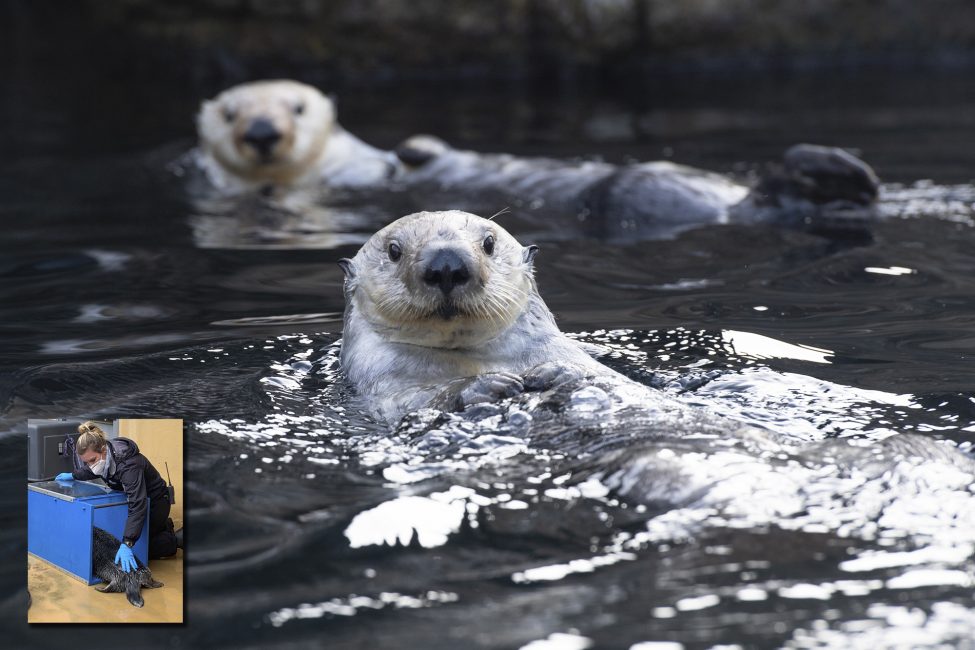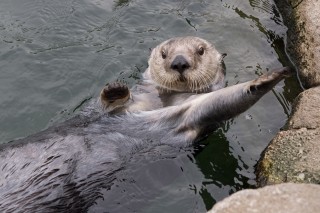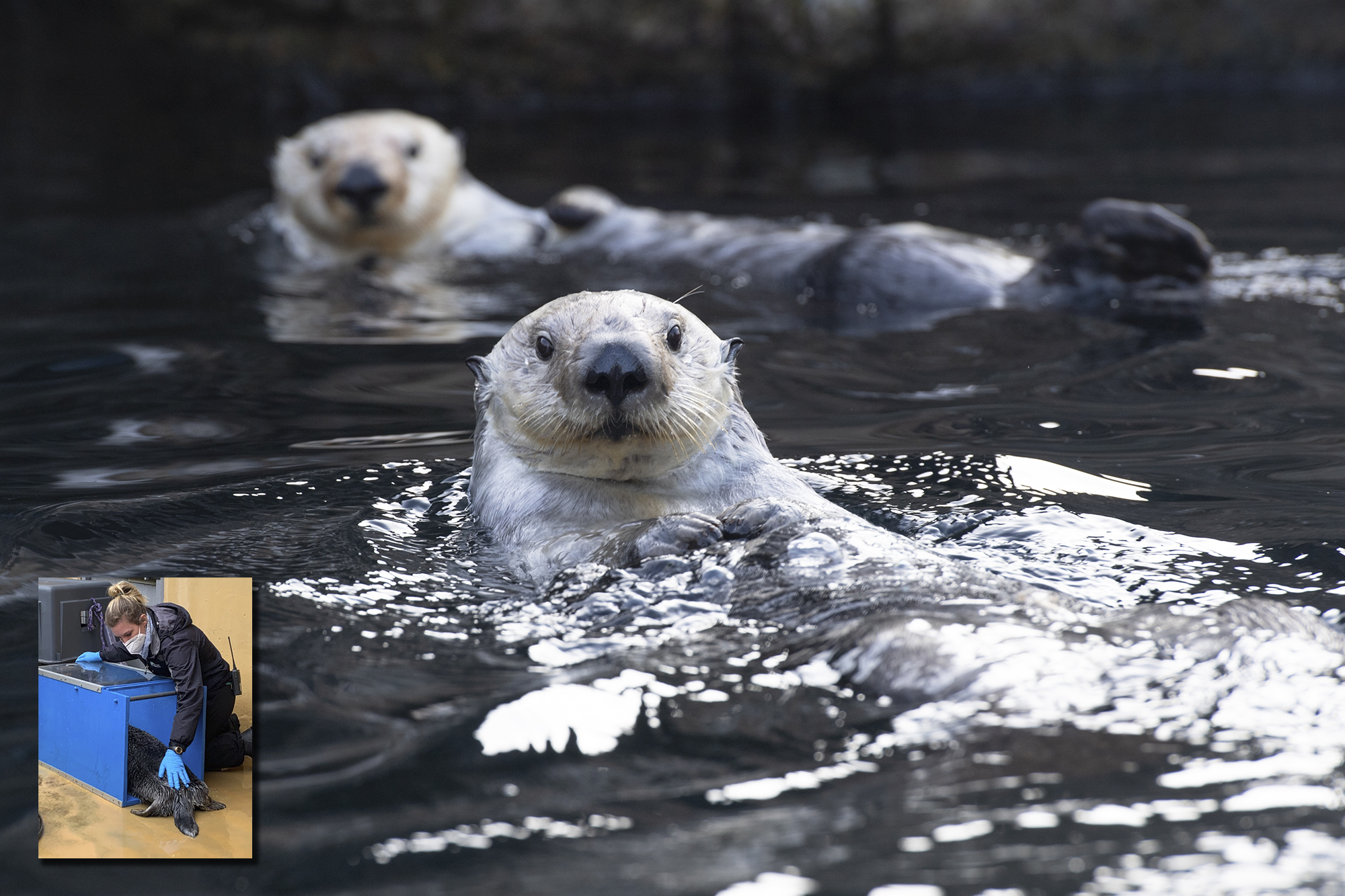
April 14, 2022
Hot Shots
- as seen by -
 Caitlin Bartlett
Caitlin Bartlett
Navigating the pandemic has been a challenging time for everyone, including animal staff who have cared for our animals while also taking steps to protect ourselves and our colleagues. For some wild animal keepers, there are additional requirements to safely work with animals that may be susceptible to COVID-19. We know that felines, primates, and mustelids (the family of mammals including weasels, badgers, wolverine, mink, and otters among others) are susceptible to other coronaviruses so there was a chance that these same species would be able to catch or transmit COVID-19.
As keepers, we are extra vigilant and careful with our animals, especially when it comes to prevention of transmission of any type of zoonoses – diseases that can be passed between humans and animals. In this case, we took precautions to protect Jacob and Quint (above), two very special southern sea otters (Enhydra lutris) that call the Wildlife Conservation Society’s New York Aquarium home.
Throughout the pandemic, keepers have followed the same guidelines with our otters as with the human public. This includes always wearing masks and gloves with as much space between us as possible. We also adjusted our exhibit viewing area to ensure safe social distancing between our guests and the otters.
Thankfully, there has been a vaccine developed for veterinary use. With the help of successful training and our veterinary staff, both of our southern sea otters have received the recommended two doses of the COVID-19 vaccine.
Jacob and Quint have already had success developing a voluntary injection behavior, so being able to give this vaccine voluntarily was a great feat for both the otters and animal care staff. For Jacob specifically, he will position himself partially inside a cubicle that gives us access to his rear flippers (above, inset). Over time he has received reinforcement for different types of tactile sensations such as touching and pinching for injections. He has also been working on increasing the duration he holds the positions for such tactile behaviors, giving us the ability to work on collecting voluntary blood samples.
Sea otters are classified as Endangered according to the IUCN Red List of Threatened Species. We are so happy that we have been able to provide our animals with this protection for their health and wellbeing through positive reinforcement training. It’s a great example of how our animals choose to participate in their own health care.
Stay safe out there and help keep our animals safe as well!
EDITOR’S NOTE: This is the first of two posts on our keepers’ training of our sea otters in behaviors that allow for their ongoing care. Read part 2 here.
Nikon D5




Leave a Comment